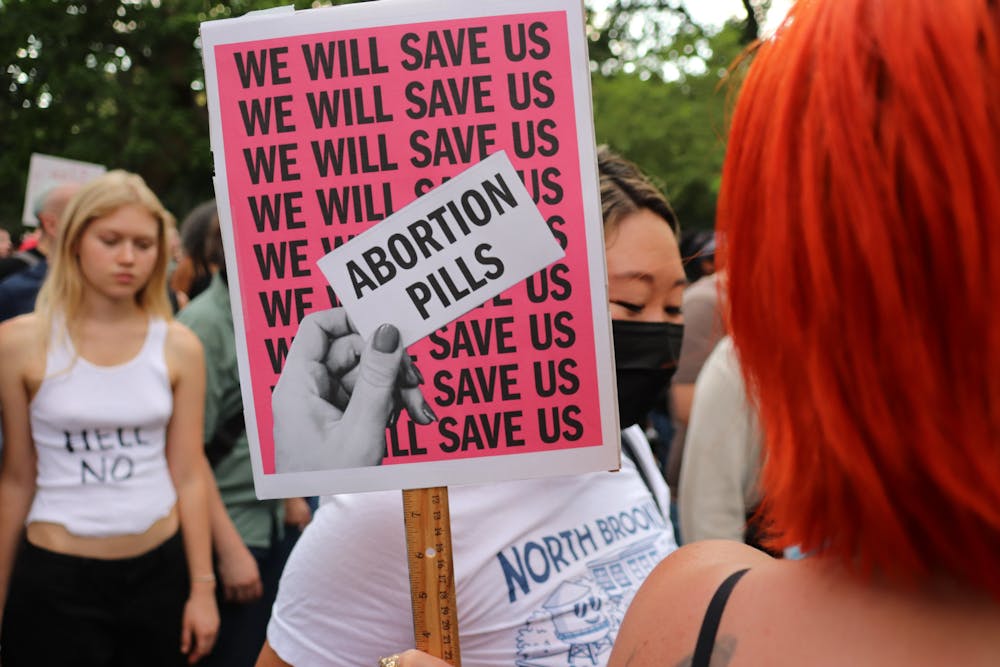By Rajika Chauhan
Staff Writer
The Supreme Court is in the process of hearing its next major abortion rights case, pertaining to the prescription of mifepristone, a widely used abortion pill.
The case has been raised on the grounds that a group of anti-abortion doctors and organizations were harmed by the Food and Drug Administration’s decision to approve the use of the drug. The agency expanded access to the drug in 2016, and notably permitted doctors to prescribe it through telemedicine and send the pills by mail in 2021, according to the New York Times. This has created a major loophole for states seeking to ban abortion access, allowing women to access abortion medications through out-of-state providers.
The implications of the case, which began in November 2022, reach beyond mifepristone access itself, endangering the authority of the FDA in approving and distributing drugs, as per NPR.
Approved by the FDA nearly two decades ago, mifepristone is used in two-thirds of drug-induced abortions across the country. It has been used by over 6 million people since 2000. The drug acts to block production of the hormone progesterone, and prepares the uterus to respond to the contraction-inducing effects of a second drug, misoprostol. According to AP News, misoprostol can be used independently to end pregnancies, but has been shown to be markedly less effective working alone and the cause for more intense side effects. Using misoprostol alone typically results in a longer duration of cramping and bleeding during the abortion process, and is typically the second-choice regimen when offered by health care providers. The two-drug regimen can end pregnancies up to 10 weeks in gestation.
The Biden administration asked the Supreme Court to step in on the case after a three-judge panel of a federal appeals court ruled to curb distribution of the drug. Access to mifepristone will not change until the justices have made their decision, according to the NYT.
If the court rules to protect access to mifepristone, it will not change the illegality of the pill in the dozen states that have put into place near-total abortion bans.
Anti-abortion doctors claim they have suffered moral injuries due to the widespread availability of the pill, as they have been required to treat women who come to emergency rooms suffering from complications related to the pill. Erin M. Hawley, the lawyer for the plaintiffs, claims her clients were forced to act against their conscience as a result of the prescription of the pill, according to the NYT.
To successfully argue their case, the plaintiffs must prove that they have been and will continue to suffer harm if the pill continues to be available. This is known in the law as “requirement standing.”
A number of the justices on the court seemed skeptical as to whether the anti-abortion group had grounds for a case, coming to a consensus early on in the deliberation process that there was a lack of proof of ‘harm,’ according to the NYT.
The justices were pointed in their questioning of whether the doctors involved in the lawsuit could demonstrate that a viable harm had been done: “You need a person,” said Justice Kagan. “So who’s your person?”
Solicitor General Elizabeth B. Prelogar, arguing on behalf of the U.S. government, emphasized the consequences of the case for the pharmaceutical industry in her court arguments: “It harms the pharmaceutical industry, which is sounding alarm bells in this case and saying that this would destabilize the system for approving and regulating drugs. And it harms women who need access to medication abortion under the conditions that F.D.A determined were safe and effective.”
Other justices expressed concern with the idea of a case limited to an abortion issue having potentially long-ranging consequences for the activity of federal institutions as a whole, such as the FDA.
Justice Neil Gorsuch described the case as an effort by “a handful of individuals,” and questioned whether it would be “a prime example of turning what could be a small lawsuit into a nationwide legislative assembly on an F.D.A. rule or any other federal government action.”
According to NPR, The line of questioning taken by the justices suggests that a ruling in favor of the federal government may be made due to the lack of cause on the claimant’s parts, which would not address the ethicality or harm associated with the abortion pills themselves.
Abortion rights in America have been in jeopardy since the Court’s Dobbs vs Jackson’s Women’s Health decision, which effectively ended the nation-wide right to an abortion in place since Roe v. Wade. Abortion rights cases have been increasingly circulated in front of the Supreme Court, even after it stated in its Dobbs ruling that it would leave the question “to the people and their elected representatives,” according to the NYT.
The case’s outcome is dependent on the ability of the plaintiffs to demonstrate harm, and hinged also on how the court responds to its implications for the regulatory powers and authority of federal agencies such as the FDA.







